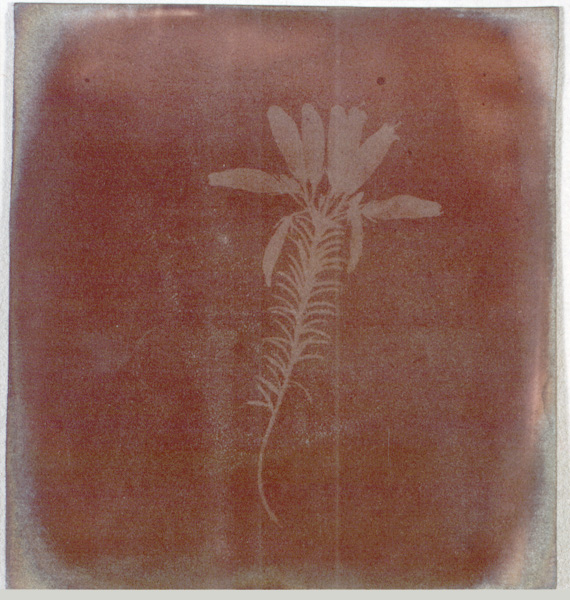Although Johann H. Shulz was the first to discover silver nitrate; a substance that changes colour when it's exposed to light, Joseph N. Niepce was the first person to ever take a photograph in 1827, using a camera obscura. By letting light draw the picture his Heliographs (sun prints) were a prototype to modern photography. However, to create one photograph it took 8 hours and it would fade quite quickly.
Camera obscura
http://pl.wikipedia.org/wiki/Camera_obscura
In 1839, Louis-Jacques-Mande Daguerre (1787-1851) and William Henry Fox Talbot (1800- 1877) presented their newest inventions.
Daguerre presented 'The Daguerreotype', which was basically a camera that could transfer the image onto a metal plate. People would have to pose several minutes, or it would turn out blury. William Talibot's invention was the 'Photogenic drawing'. The drawing was prepared by soaking good quality paper in a weak solution of common salt. When the paper dried, he'd brush it with a solution of silver nitrate and then washed it again in a solution of common salt. That would create a negative image which would be placed over a new sheet of paper, and by exposing it to the light it would create a positive. Later, he also invented a Tablotype (Calotype) process which was a prototype to todays negative/positive process.

Erica mutabilis
made on stiff paper
W. Talbot
march 1839
(source: https://www.mhs.ox.ac.uk/features/ephotos/ephoto1.htm#photo)
march 1839
(source: https://www.mhs.ox.ac.uk/features/ephotos/ephoto1.htm#photo)
In 1860s men and women were usually photographed in full lenght, standing, while children posed standing on a chair or leaning against a table or a chair. Babies were photographed either in the arms of their mother or tied to a chair. If they wanted to only photograph the child, they would cover the mother with a drape. Backgrounds were plain until 1870s/80s; when they started adding more colorful backgrounds and taking outdoor photographs. Also, fences were used as studio props.
An interesting fact is that, today, every 2 minutes we take as many photos as Victirians did during the entire 19th century. It was estimated that people would take 880 billion photos in 2014, which makes 10% off all the photos ever taken.
Memento Mori - latin; "Remember you shall die"
As child mortality was very high in the Victorian Era, Victorians found a way to remember them, as well as other family members. Postmortem photography (memento mori) means photographing a deceased person, in order to remember them. As photography was just invented and it was very expensive at the time, for most of them it would be the only photograph of them ever taken.
The photographs of the corpse would usually be taken a few weeks after the death, often with other family members. Adults would usually be sitting on a chair or leaning on a frame that was specially designed. Children would be posed with a favourite toy, sat in their mother's laps, lying in a crib or standing - while someone in the background would hold their head. Also, they would make the deceased seem like it's still alive by either having their eyes open, or painting pupils and adding rosy tint on their cheeks on the photographic print.

Portrait of a girl after her death
19th century
photograph
photographer: unknown
(source: http://www.mdolla.com/2012/05/stiff-pose-victorian-postmortem.html)
19th century
photograph
photographer: unknown
(source: http://www.mdolla.com/2012/05/stiff-pose-victorian-postmortem.html)

Family photo - after their son's death
19th century
photograph
photographer: unknown
19th century
photograph
photographer: unknown
(source: http://www.mdolla.com/2012/05/stiff-pose-victorian-postmortem.html)
Mother with her three children, after the death of the youngest daughter
19th century
photograph
photographer: unknown
(source: http://listverse.com/2012/10/24/memento-mori-victorian-death-photos/)
Family portrait
19th century
photograph
photographer: unknown
(source: http://abcnews.go.com/Entertainment/photos/post-mortem-photographs-20496377)
Spirit Photography
Spirit photography was very popular in the late 19th century, early 20th. In some photographs, ghostly faces would appear floating above or behind the sitters. Photographers would call themselves 'mediums' and they made people believe that they could make the dead appear in their photographs. Unfortunatelly, those weren't ghosts, but 'Victorian Photoshop', I'd say. Basically, the photographer would add ghostly apparitions and double exposure onto the plates with living sitters. There was also an easier way. To get a clear image, the sitters had to be absolutelly still for a minute or so, and while they waited for the photograph to be taken, photographer's assistant or a model would quietly appear in the background for a few moments, usually draped in white sheets. Because he/she wasn't still, for that certain period of time, there would be a transparent 'figure' on the finished plate.
William Hope (1863- 1933) was one of the most popular spirit photographers. He would use multiple exposure techniques to create his spirit photographs. His deception was publicly exposed in the early 20s. Ada Deane was a spirit photographer famous in the 1920s, too.
Man and woman
Spirit photograph
Photographer: William Hope
(source: http://www.theguardian.com/artanddesign/gallery/2010/oct/29/haunted-photographs-william-hope-halloween
Two women
Gelatin silver photograph
c. 1920
Photographer: Ada Deane
(source: https://www.flickr.com/groups/vintage-spirit-photography/pool/)
http://www.edinphoto.org.uk/1_early/1_early_photography_-_processes_-_photogenic_drawing.htm
http://www.librarycompany.org/catchingashadow/section1/index.htm
http://www.edinphoto.org.uk/1_early/1_early_photography_-_1839.htm
www.softschools.com/timelines/camera_timeline/32
http://listverse.com/2009/08/29/top-10-creepy-aspects-of-victorian-life/
http://www.mdolla.com/2012/05/stiff-pose-victorian-postmortem.html
http://inventors.about.com/od/pstartinventions/a/stilphotography.htm
http://www.prairieghosts.com/ph_history.html
http://www.theguardian.com/artanddesign/gallery/2010/oct/29/haunted-photographs-william-hope-halloween
http://higherperspective.com/2015/02/understanding-time.html#gUTOc8rKOwzjvUM0.99
reference found on Feb 14/15th 2015
They give cautious and ideal data on a huge social affair of subjects. Disregarding whether you need understanding on certified issues or business or are a reinforced headway buff, the most recent international news can be had at the snap of a catch. medios independientes
OdgovoriIzbriši